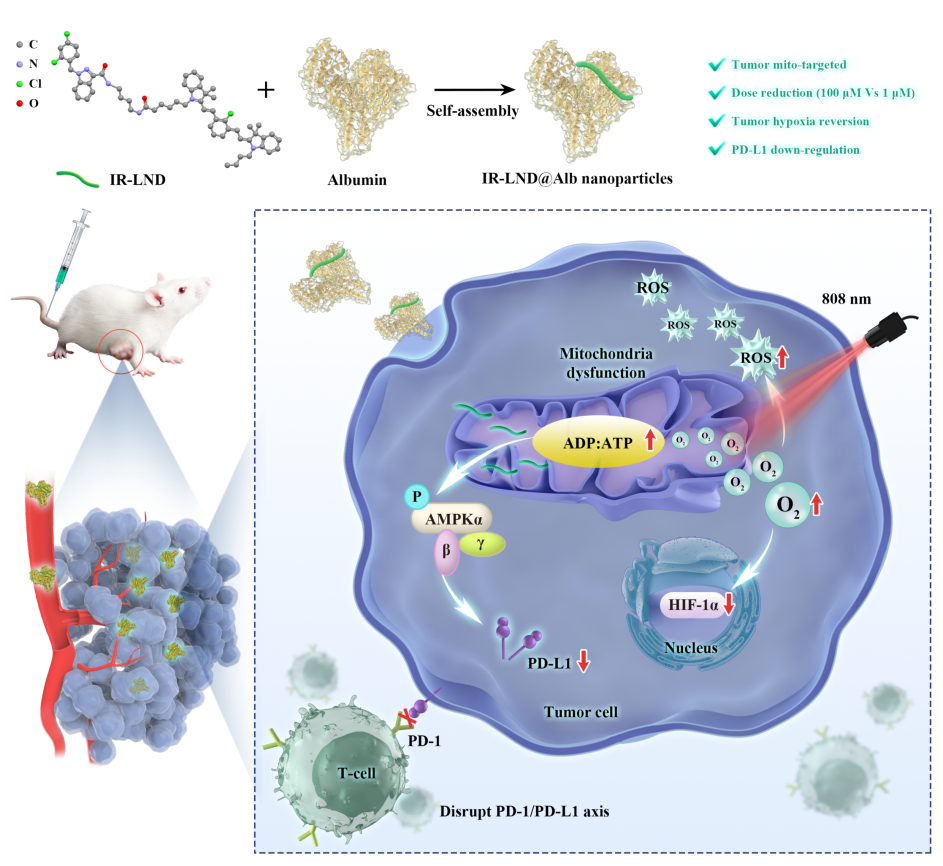- Newsroom
- Research Progress
- Academic Events
- Join Us
Tumor Selective Metabolic Reprogramming as a Prospective PD-L1 Depression Strategy to Reactivate Immunotherapy
2022-08-30
Currently, the role of the lysosome, endoplasmic reticulum, or dictyosome in the transcription and translation of programmed cell death ligand 1 (PD-L1) was well revealed, but the role and function of mitochondria in the PD-L1 expression in tumors was still not fully researched. In this research, Jianliang Shen researcher and Jong Seung Kim academician first determined that Lonidamine (LND), a traditional chemotherapeutic, could depress PD-L1 expression on the cancer cell membrane via inducing AMPK phosphorylation and ameliorate tumor hypoxia. Following this, we prepared IR-LND by conjugating tumor-targeted heptamethine cyanine dye IR-68 with LND, which then further self-assembled with albumin (Alb) to form IR-LND@Alb nanoparticles. Benefiting from the tumor-selective and mitochondria-targeted capacity of IR-68, IR-LND@Alb selectively accumulated in the tumor mitochondria for impairing oxidative phosphorylation (OXPHOS), which was 100-fold more potent than LND to further depress PD-L1 expression (LND 100 μM vs IR-LND 1 μM). All in all, this tumor-selective OXPHOS impairing strategy with PD-L1 depression would open a new window for reactivating immunotherapy and sensitizing photodynamic therapy. This study entitled “Tumor Selective Metabolic Reprogramming as a Prospective PD-L1 Depression Strategy to Reactivate Immunotherapy” was published in Advanced Materials (IF: 32.086).

Figure 1. The preparation process of IR-LND@Alb and the proposed mechanism of IR-LND@Alb for tumor-selective PD-L1 down-regulation to reactivate immunotherapy, and tumor hypoxia alleviation to enhance tumor photodynamic therapy.
The corresponding authors of the paper are Jianliang Shen Researcher, and Juyoung Yoon Academician, the first authors of the paper are Yu Liu postgraduate and Zaigang Zhou Assistant Researcher. This paper was awarded the National Natural Science Foundation of China (82003697, and21977081), the Zhejiang Provincial Natural Science of Foundation of China (LZ19H180001), and the National Research Foundation of Korea(NRF) grant funded by the Korea government(MSIT) (No. 2022R1A2C3005420), etc. heavily funded.
Original link: https://onlinelibrary.wiley.com/doi/10.1002/adma.202206121